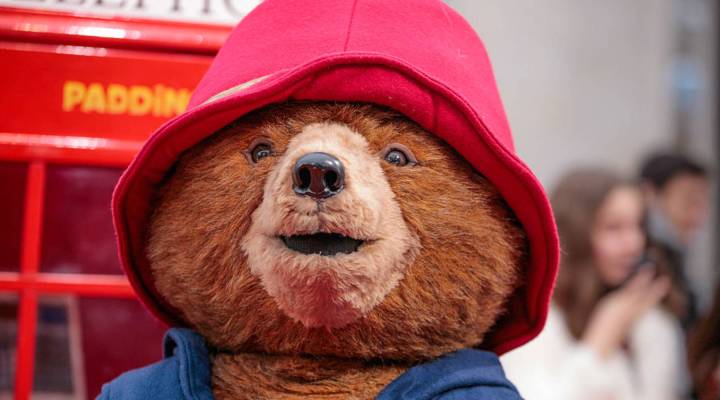
How Paddington, Peppa and Pooh bring in the big bucks
Share Now on:
How Paddington, Peppa and Pooh bring in the big bucks

Earlier this week, children’s author and creator of Paddington Bear, Michael Bond, passed away at the age of 91. Besides being a beloved children’s character, the bear, who stowed away on a boat to the U.K. from his native Peru, recently became a symbol for the acceptance of refugees.
Yet, Paddington Bear was not always the success he is today. Seven publishers rejected Bond’s book before Collins decided to publish it in 1958, according to The Guardian. Paddington surged in popularity in the 1970s when the bear made it on TV. Since then, the books have been translated into 40 languages and sold 35 million copies. In 2015, a movie based on the book made $268 million in global box office sales. A sequel is supposed to come out in November of this year.
With the sequel in the works, Bravado — a merchandising and brand management arm of Universal Music group — entered into a deal with The Copyrights Group to license the Paddington Brand in the U.S. and Canada. According to The Guardian, Paddington merchandise makes as much as £5 million a year — that’s equivalent to around $6.47 million.
When a toy Paddington was first made available to the public, it was without Bond’s permission, according to a 2014 interview. After being informed by a shopkeeper that designers Shirley and Eddie Clarkson were making and selling stuffed Paddington bears, Bond went to a lawyer and considered suing them for copyright infringement. That is until he met them in an elevator.
“I got in the lift with Shirley and Eddie. They were terribly nice and pretended it had all been a mistake — and we were friends by the time we got out of the lift. I gave them a licence,” Bond said.
Paddington is not the only children’s character to make it big thanks to TV and merchandise deals. Let’s do the numbers on some of the other children’s characters that made it big.

A Staffordshire Bull Terrier carrying a Winnie-the-Pooh toy in its mouth arrives for the final day of Crufts dog show in 2016.
Winnie-the-Pooh:
Before there was Paddington, another British bear was winning hearts on both sides of the Atlantic. Winnie-the-Pooh was created by A. A. Milne in 1926. The rights to Pooh and his gang were bought by Stephen Slesinger in 1930.
The residents of Ashdown forest are currently owned by Disney, which got a license for the cartoon in 1953 after Slesinger died. The Slesinger family was set to receive regular royalties on any related products. In 1991, they launched a lawsuit claiming that they had been short-changed and demanded $2 billion in damages. Eighteen years later, in 2009, Disney successfully fought off that lawsuit.
And while sales of Pooh branded products were declining at the time, the New York Times reported that in 2011, they still brought in $5.5 billion a year. Overseas markets accounted for 79 percent of those sales. Pooh is particularly popular in Japan, where according to the Times, designers have licensed the bear for $700 dresses and $400 bags.
Disney is the world’s largest licensor, according to the International Licensing Industry Merchandisers’ Association. This should come as no surprise as it owns some of the top franchises in the world, including, in addition to Winnie-the-Pooh, Disney Princess, Star Wars, and Toy Story.
| Let’s do the numbers: The Harry Potter empire |
| Let’s do the numbers: the ‘Star Wars’ empire |

This Peppa Pig, which will sing by having its hands held, sells for £20 — or about $25.88.
Peppa the Pig:
Move over bears, there is new pig in town. Peppa the Pig, a children’s cartoon character that can usually be found entertaining toddlers and parents alike on Nick Jr, is proof that to make it big you ought to come to America. Back in 2011, Peppa’s total revenues — including TV sales — amounted to £200 million ($259.67 million), according to The Guardian. By 2014, the boisterous pig was estimated to bring in $1 billion in global TV and merchandising revenues.
Peppa launched in the U.K., its biggest market, in 2004. It is currently broadcast in more than 180 territories. The Guardian reports that there are more than 12,000 Peppa products, including toys, pasta and ice cream.
Entertainment One, which broadcasts the cartoon across the pond, expects Peppa to become a $2 billion franchise in the next three to five years, mainly thanks to the pig’s popularity in the U.S. Since she ventured into America, Peppa has made it into Target, Walmart and Toys R’ Us.
Peanuts:
Another cartoon to make it big over the years is Peanuts. Earlier this year, Iconix Brand Group Inc. sold its 80 percent stake in Peanuts Worldwide LLC to DHX Media Ltd. Iconix acquired the majority stake two years ago for $100 million and was expected to sell it for $300 million. In the end, it was sold for $345 million, according to Forbes. The other 20 percent of the company is owned by family of Charles Schulz, the creator of the Peanuts characters that include Snoopy and Charlie Brown. In 2016, the Peanuts brand made $95 million in revenue.
| First map of Disneyland sells for $708,000 at auction |
| Finally, Disney introduces a Latina princess |
| Trademark law: Why Disney is fighting a Canadian DJ |
There’s a lot happening in the world. Through it all, Marketplace is here for you.
You rely on Marketplace to break down the world’s events and tell you how it affects you in a fact-based, approachable way. We rely on your financial support to keep making that possible.
Your donation today powers the independent journalism that you rely on. For just $5/month, you can help sustain Marketplace so we can keep reporting on the things that matter to you.


















